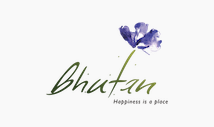While Bhutan is one of the smallest countries in the world, its cultural diversity and richness are profound.
As such, strong emphasis is laid on the promotion and preservation of its unique culture. By protecting and nurturing Bhutan’s living culture it is believed that it will help guard the sovereignty of the nation
EATING HABITS
Traditional Bhutanese eating habits are simple ….and, in general, food is eaten with hands. Family ….members eat while sitting cross legged on the ….wooden floor with food first being served to the head of the household first.
It is usually women who serve the food and in ….most cases, the mother. Before eating, a short ….prayer is offered and a small morsel placed on the ….floor as an offering to the local spirits and deities. ….With modernization, eating habits have changed ….and in urban areas, people usually eat with cutlery whilst seated at a regular dining table.
Traditionally dishes were cooked in earthenware, but with the easy availability of modern goods, pots and pans have largely replaced their use. A typical Bhutanese meal consists of rice, a dish of Ema Datshi, the country’s favourite dish of chili and cheese, pork, beef curry or lentils.
FUNERAL
Death signifies re-birth or a mere passing on to a new life. In keeping with the traditions, elaborate rituals are performed to ensure a safe passage and a good rebirth.
The 7th, 14th, 21st and 49th days after a person’s death are considered especially important and are recognized by erecting prayer flags in the name of the deceased and performing specific religious ….rituals. While the deceased are normally cremated, ….funerary practices vary in few cases. In some parts ….of the country, people typically bury their dead while in some, they carry out ‘Sky Burials’, a process in which the deceased are prepared and left atop mountains to be devoured by vultures in a final act of compassion and generosity. Elaborate and ancient rituals are also conducted on the anniversary of the death with the erection of prayer flags. The relatives and people of the locality come with alcohol, rice or other sundry items to attend such rituals.
BIRTH
The birth of a child is always welcomed. In Bhutan extended family and guests are discouraged from ….visiting during the first three days after the birth.
On the third day, a short purification ritual is ….performed after which visitors are welcomed to ….visit the new born and mother. Bhutanese value ….children as progenitors of the future and therefore ….do not discriminate on the sex of the child. ….Traditionally various gifts are offered ranging from ….dairy products to cloth and money.
.The child is not immediately named; this responsibility is usually entrusted to the head lama (Buddhist priest) of the local temple. The mother and child will also receive blessings from the local deity (natal deity) and it was traditional that the name associated with the deity is given. In some cases, the child is given the name of the day on which the child is born. Based on the Bhutanese calendar, a horoscope is written based on the time and date of the birth, this will detail the various rituals to be performed at different times in the life of the child and to an extent predict his or her future.
MARRIAGE
BHUTANESE DRESS
One of the most distinctive features of the ….Bhutanese is their traditional dress, unique ….garments that have evolved over thousands of ….years. Men wear the Gho, a knee-length robe ….somewhat resembling a kimono that is tied at ….the waist by a traditional belt known as Kera. The ….pouch which forms at the front traditionally was ….used for carrying food bowls and a small dagger. ….Today however it is more accustomed to carrying ….small articles such as wallets, mobile phones and ….Doma (beetle nut).
Women wear the Kira, a long, ankle-length dress accompanied by a light outer jacket known as a Tego with an inner layer known as a Wonju.
However, tribal and semi-nomadic people like the Bramis and Brokpas of eastern Bhutan generally wear clothing that differs from the rest of the Bhutanese population. The Brokpas and the Bramis both wear dresses woven either out of Yak or Sheep hair.
Bhutanese wear long scarves when visiting Dzongs and other administrative centers. The scarves worn vary in color, signifying the wearer’s status or rank. The scarf worn by men is known as Kabney while those worn by women are known as Rachus. .
The Rachu is hung over a woman’s shoulder and like the scarves worn by men, they too have specific rank associated with their color. Rachus are usually woven out of raw silk and embroidered with beautiful rich patterns.
Bhutan is rich in cultural diversity and this richness ….is further enhanced by the wide variety of ….elaborate and colorful religious festivals that are ….celebrated throughout the country. Every village is ….known for their unique festival though the most ….widely known is the annual Tshechu, an annual ….religious festival.
As the Tshechu begins, the villagers and the ….general populace dress in their finest clothes and ….congregate at their local temples and monasteries ….where these festivals take place. Tshechus are usually occasions to mark important events in the life of the second Buddha, the Indian/Pakistani Tantric master known as Guru Rinpoche or the Precious Master. Various mask dances are performed together with songs and dances for three days on average.
These religious celebrations are lively, high-spirited affairs during which people share meals of red rice, spicy pork, Ema Datshi and Momos (pork/beef dumplings) whilst drinking the heady traditional rice wine known as Ara. These occasions provide the villagers with a respite from the hard labor of their day to day lives and gives the community an opportunity to catch up with family and friends.





